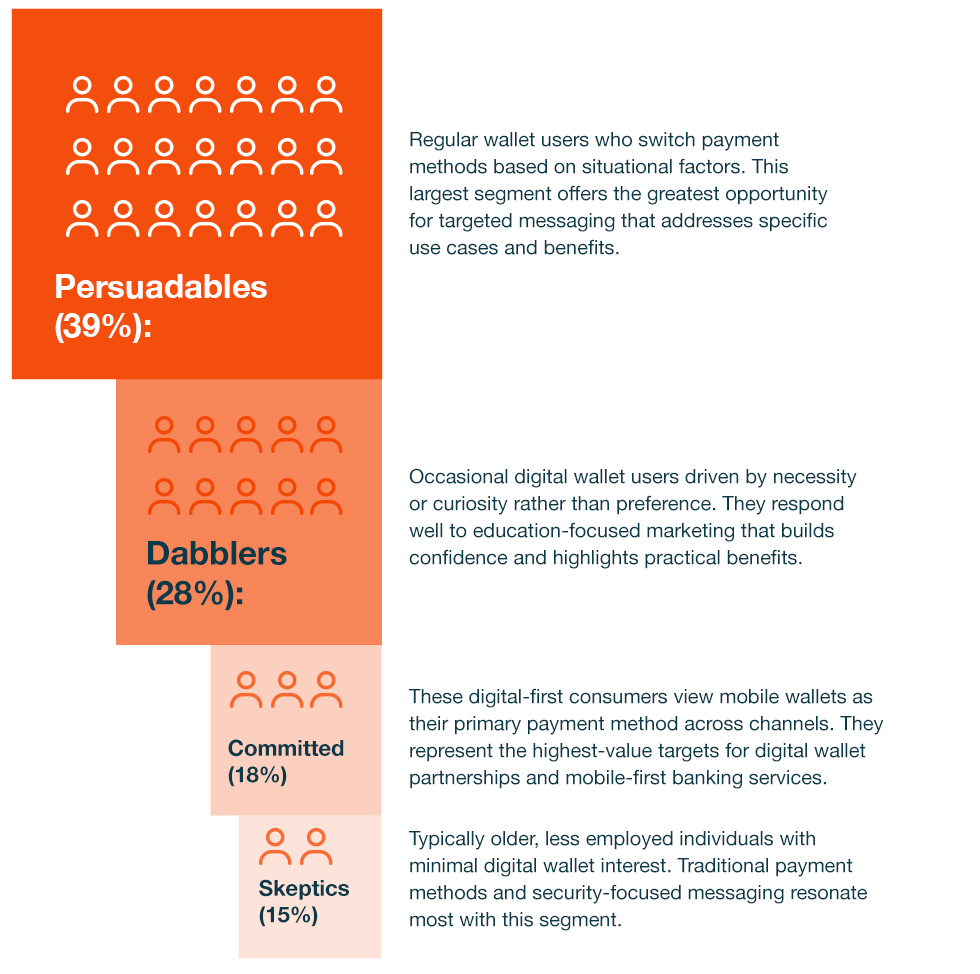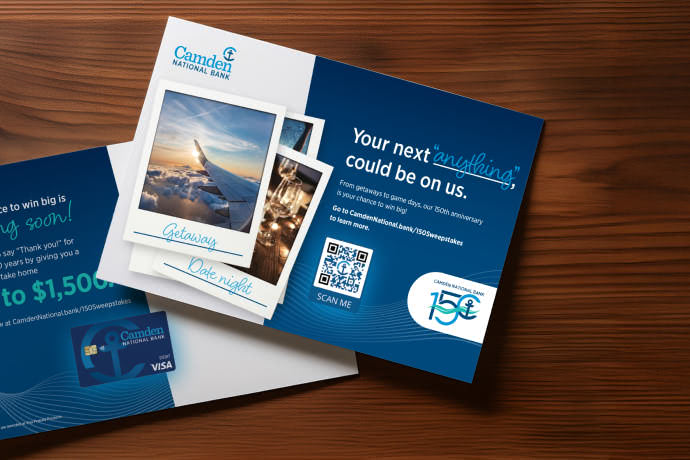The Channel Effect: Why Payment Preferences are Split Between Online and In-Store Experiences

The days of developing “one-size-fits-all” payment strategies are over. New data from PYMNTS Intelligence reveals that consumer payment preferences vary dramatically by channel, with debit cards dominating most in-store transactions, while credit cards and digital wallets rule online purchases. For financial services marketers, understanding these channel-specific behaviors isn’t just insightful, it’s critical for developing effective acquisition strategies, enhancing customer experiences, and maximizing product positioning.
The Numbers Tell the Story
The divide in payment preferences is more pronounced than many financial institutions realize. According to PYMNTS Intelligence research, consumers are twice as likely to use digital wallets for online retail purchases (16%) compared to in-store retail purchases (8%). This gap signals a shift in how consumers approach payment decisions based on their shopping environment.
The merchant landscape further reinforces these channel preferences. Amazon captures an impressive 53% of online credit card users and 44% of online debit card users for their last retail transaction, demonstrating the e-commerce giant’s dominance in digital payment capture. Meanwhile, Walmart reigns supreme in brick-and-mortar environments, capturing 23% of in-store debit shoppers and 15% of in-store credit shoppers.
Perhaps the most telling for product marketers: when consumers explain their payment choices, rewards programs or cash back options emerge as the top reasons for using credit cards, while convenience drives debit card usage. This motivation split provides a clear roadmap for channel-specific messaging strategies.
Decoding Channel Preference Drivers
The in-store preference for debit cards stems from basic consumer psychology. Budget control and spending awareness rank high among debit users, as immediate payment reduces the risk of overspending on routine purchases. Debit transactions also offer convenience, creating the feeling of a more straightforward route for everyday shopping.
Additionally, more retailers [beyond gas stations] are charging fees for credit versus debit transactions, creating a financial incentive for debit usage that savvy consumers recognize and act upon.
Online environments tell a different story entirely. Digital wallets emerged as a strong contender for online convenience, with 55% of users citing convenience as their main reason for choosing this payment method. The digital-first nature of online shopping aligns naturally with digital payment methods.
Security concerns also increase credit card usage online, where consumers feel more protected by credit card fraud protections compared to debit card vulnerabilities. For larger or strategic purchases, the rewards potential of credit cards becomes even more attractive in the online environment.
Travel – a “Rogue” Category
Travel emerges as the exception to typical channel preferences. For travel services, 43.7% of consumers most recently used a credit card, while 26.9% used a debit card, regardless of booking channel. More significantly, consumers are 2.4 times more likely to use a digital wallet for a travel purchase than for a grocery purchase.
This travel anomaly creates excellent opportunities for financial institutions. Travel rewards cards and digital wallet promotion campaigns can leverage this category-specific behavior to drive both customer acquisition and engagement. The higher transaction values typical in travel also align well with credit card economics and rewards program structures.
Media Logic Pulse Check
To validate these insights, we surveyed several Media Logic professionals about their own payment preferences. The results mainly mirrored PYMNTS’ research.
Most team members surveyed reported using debit cards for routine in-store purchases like groceries and gas, while credit cards and digital wallet options dominated online purchases (namely Amazon).
One Logician’s answers aligned completely stating, “I will use Apple Pay for any online payment when presented with that option”, while another provided a surprising reply. This particular marketer noted that they used their credit card for all purchases, regardless of whether they were online or in-person, because theirs has a cash back incentive. Thus, like travel, reward cards may be another exception.
The Generational Surprise
Contrary to common assumptions, the gap in eCommerce adoption for retail and travel purchases is surprisingly narrow across age groups. This finding suggests that financial institutions should focus on motivation-based marketing rather than purely demographic-driven strategies.
The implication for payment product marketing is clear: channel behavior matters more than age when it comes to payment preferences. A 60-year-old shopping online may behave more like a 25-year-old than like their age-matched peer shopping in-store.
Four Consumer Personas Every Financial Institution Should Know
Now that we’ve identified how people spend, it’s important to understand additional factors as to why they have these payment preferences. A helpful way to do so is through segmented analysis. Luckily, PYMNTS had these bases covered with identifying the following 4 unique personas:

Furthermore, what are the strategic implications of this consumer behavior as it pertains to financial service marketers?
- Differentiated Messaging /Product Positioning
If you’re a payment marketer, you already know how to position debit card use for everyday purchases and that it provides convenience and control. Whereas credit / digital wallets should be positioned as secure and online convenience tools, with particular emphasis on speed and simplicity.
- Shifts to a Channel-Specific Strategy
Acquisition campaigns must become channel-specific to maximize effectiveness. As many marketers know, strategic partnerships, benefits and offers promoting either in-store or online shopping are key to debit and credit card usage.
Here’s an example: A credit union partners with a regional, farm-fresh grocery store chain to run a cross-promotional paid media campaign. The terms of the campaign are, when a credit union member uses their debit card to purchase $50+ at any of the chain’s stores throughout the month of November, they would receive 5% cash back.
This is a simple example, but one that is supported by overarching data. It suggests that consumers make payment method decisions based on shopping context, making contextual marketing more powerful than broad demographic targeting.
- Customer Experience (CX) Optimization
Mobile app optimization becomes critical for the 55% of consumers who value digital wallet convenience. However, the channel preference data suggests that seamless cross-channel payment experiences matter most. Customers should feel equally supported whether they’re making a quick debit purchase in-store or using a travel rewards credit card for online booking.
Stability Creates Opportunity
Lastly, the PYMNTS research indicates that online shopping for categories such as groceries, restaurants, and retail have stabilized over the past year, suggesting that current payment preferences represent established patterns rather than temporary shifts.
For payment product development, this stability creates opportunity. Financial institutions can invest confidently in channel-specific features and benefits, knowing that consumer behavior patterns have steadied. The importance of monitoring these trends remains high, but the strategic direction is clearer than it has been in years.
The opportunity is significant for institutions willing to segment their approach: debit cards positioned for in-store convenience and budgeting, credit cards marketed for online rewards and security, and digital wallets promoted as the ultimate online efficiency tool. Most importantly, the travel category offers a unique acquisition opportunity that transcends typical channel preferences.









